
1. GEM Chambers, 2019
Yale’s Wright Laboratory:
Under a grassy bunker
in the middle of New Haven
is a portal to another world.
Monique Atherton

2. Untitled, 2019, 3. Untitled, 2019
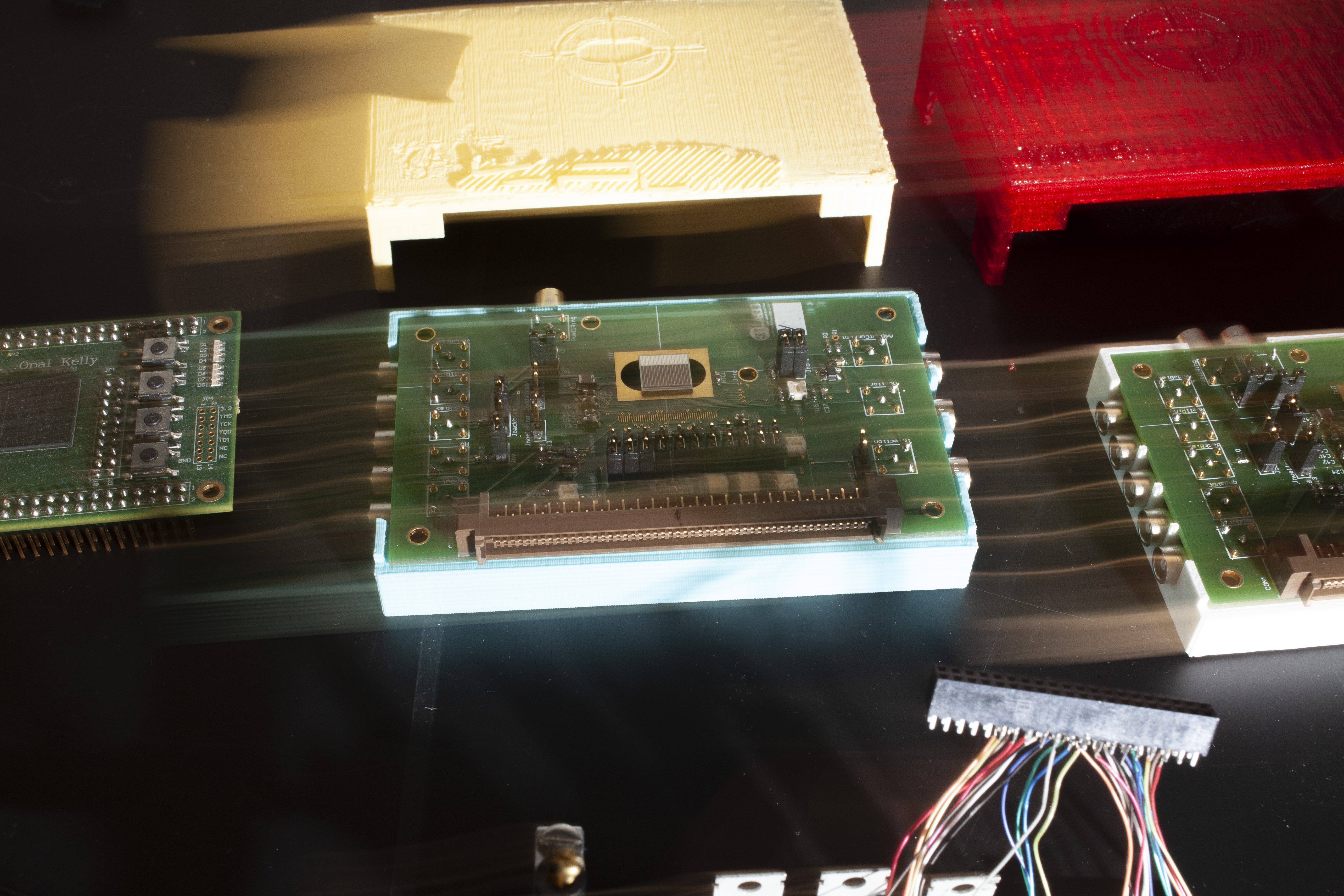
4. Untitled, 2019

5. Untitled, 2019
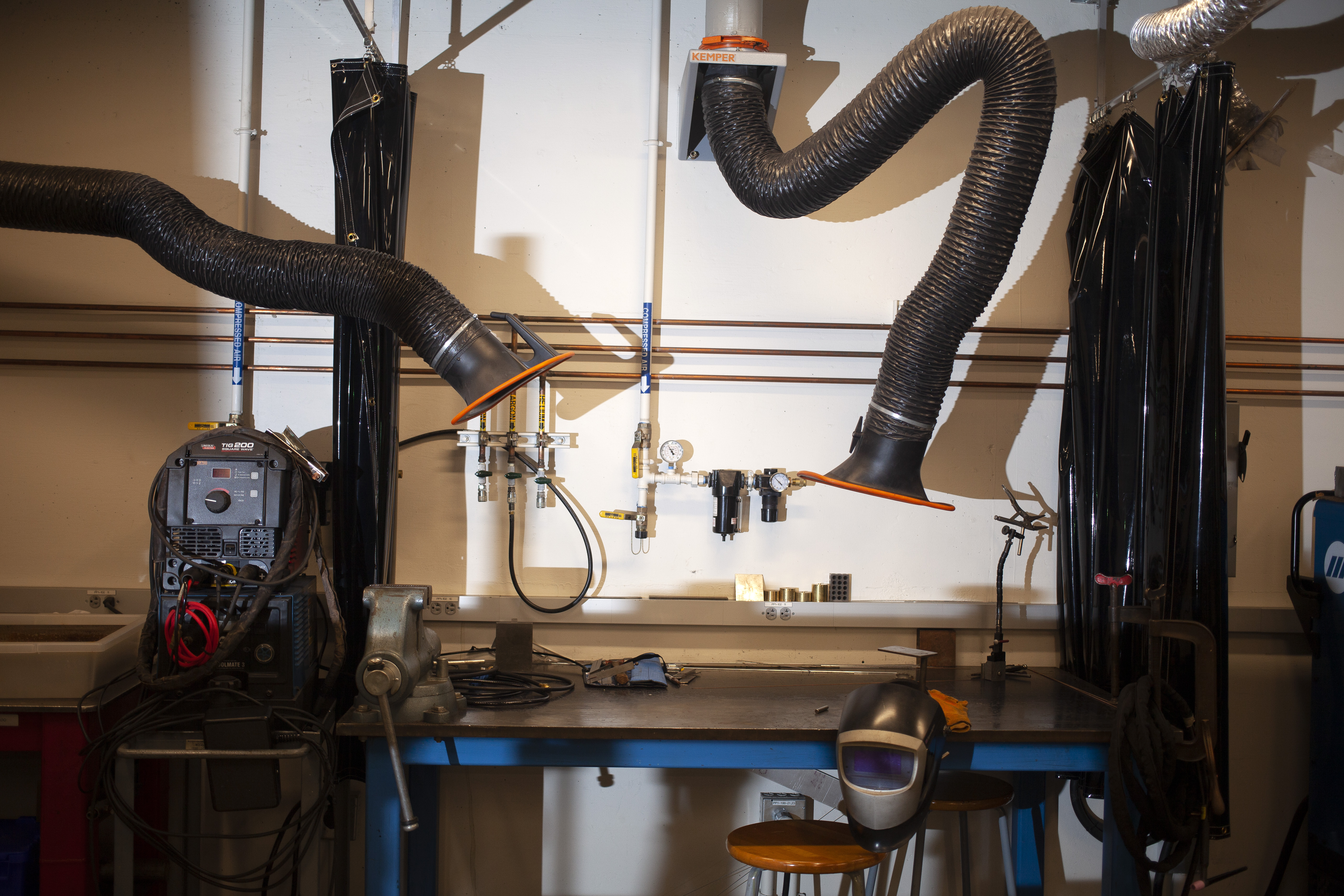
6. Untitled, 2019

7. Untitled, 2019, 8. Untitled (HIRAX Antenna), 2019
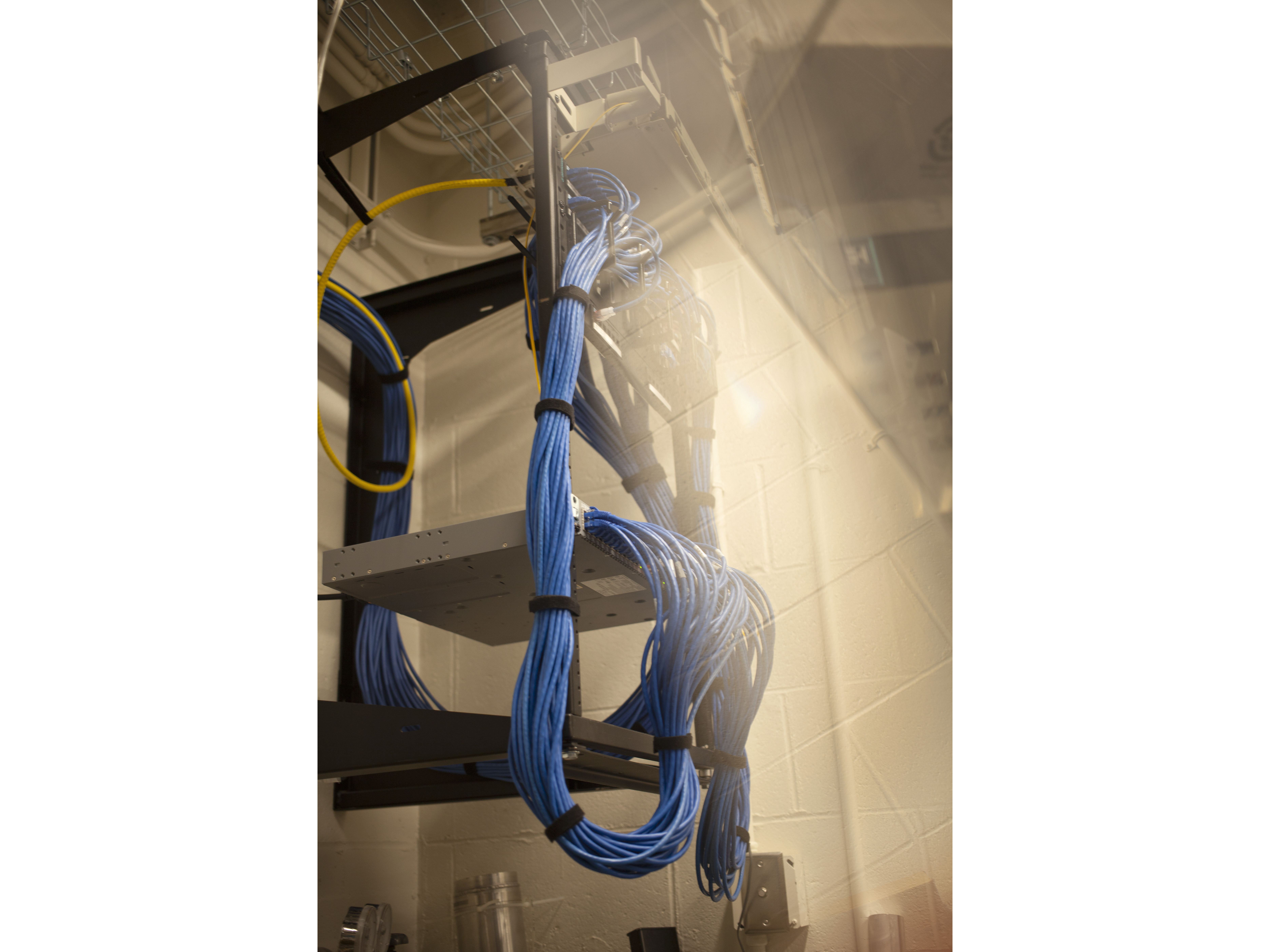
9. Wires, 2019

10. The Persistence of Magnetism, 2019

11. Untitled, 2019

12. Untitled, 2019

13. Untitled (Optics), 2019

14. Untitled, 2019

15. Untitled, 2019, 16. Untitled, 2019
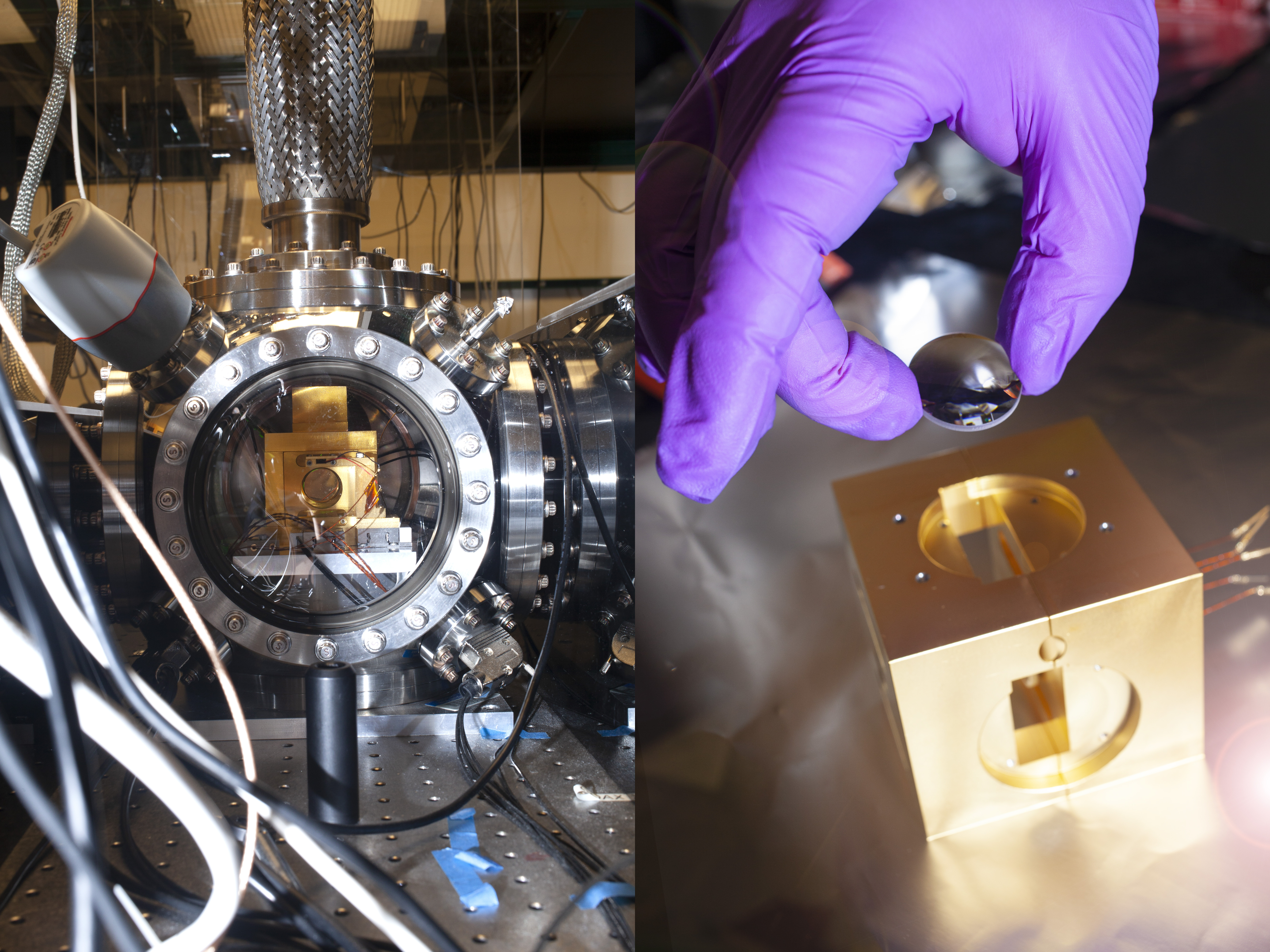
17. Untitled, 2019, 18. Untitled, 2019
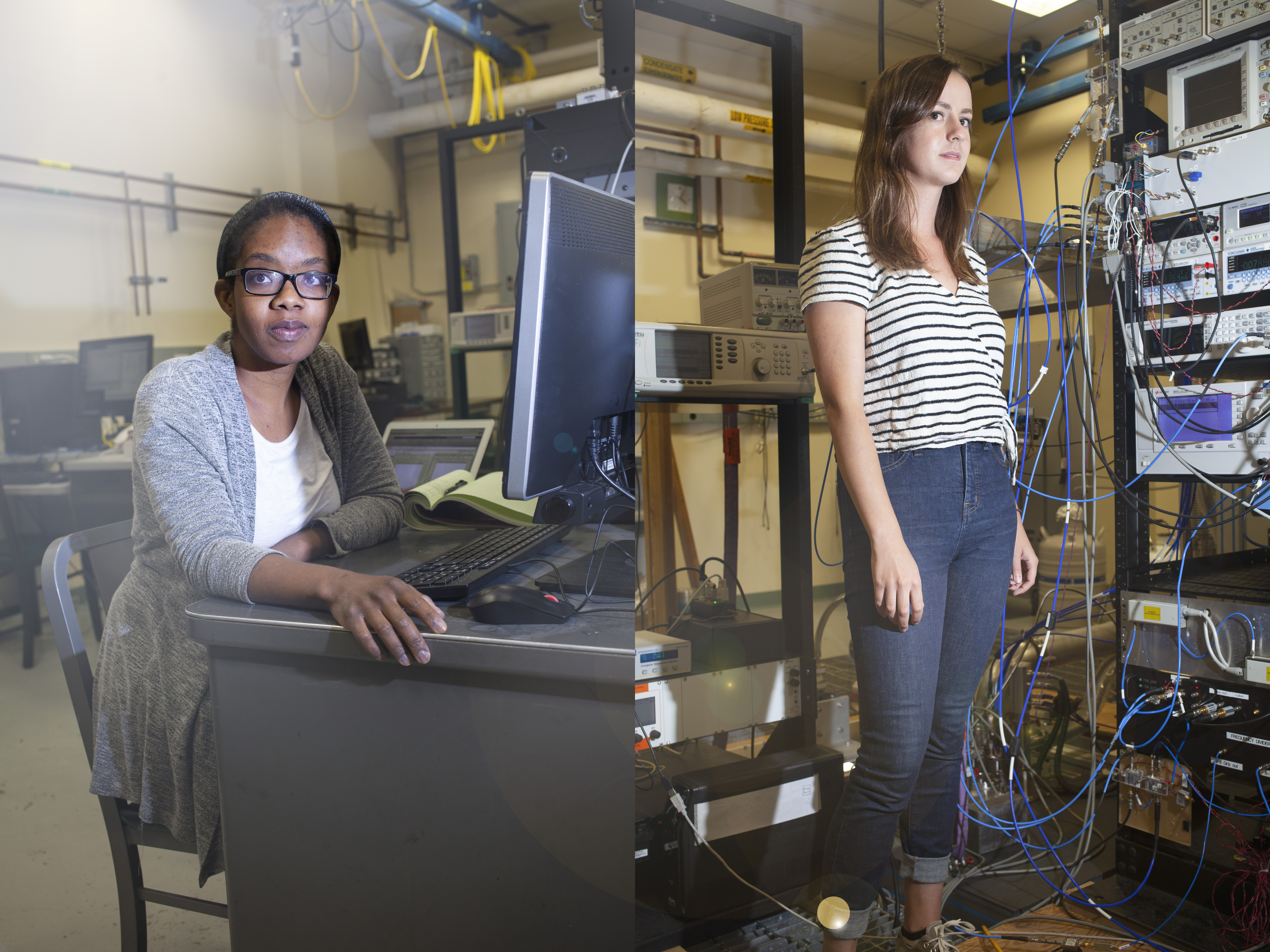
19. Untitled, 2019, 20. Untitled, 2019
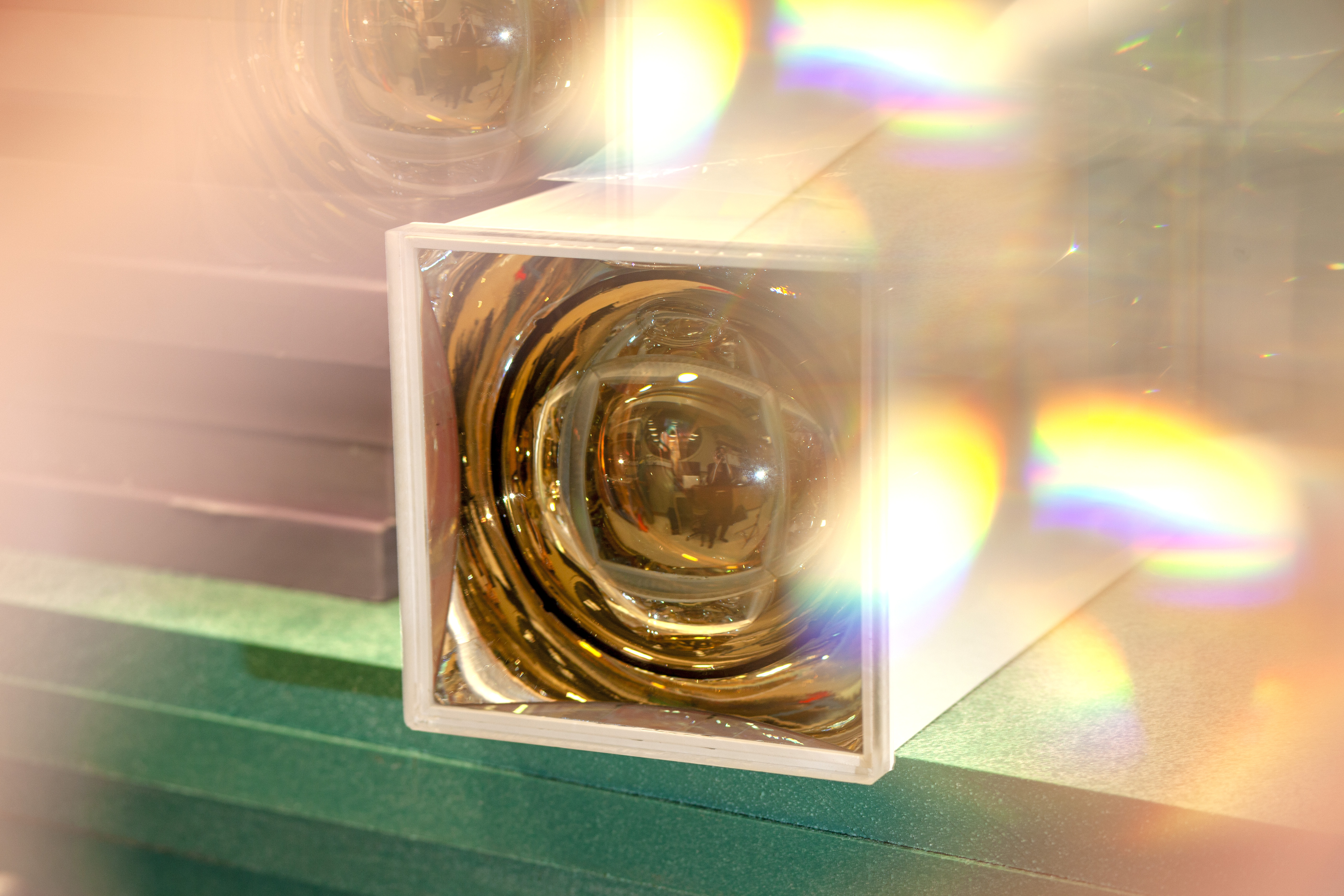
21. GEM Chambers, 2019
One of the great things about being a photographer is the exclusive access to people, places, and situations that many don’t have. This includes being introduced to things you never knew existed—in this case, it was right on my doorstep.
The Wright Laboratory is Yale’s physics laboratory where research is conducted to explore the unseen building blocks of space, time, and the universe. Its director, Karsten Heeger, was integral in creating this self-sustaining ecosystem that functions as a platform for physicists to test out their theories. Throughout my life, I have managed to avoid most of the sciences and math. I scraped by in algebra, and have never taken a chemistry, calculus, or physics class. But when I stepped into the Wright Lab on assignment for Maquette, I was introduced to a whole new world of concepts, words, and images.
My first meeting didn’t involve making any pictures. Victoria Misenti, the lab’s Programs Manager and gatekeeper, showed me around. She gave me an overview of the different projects and introduced me to physicists and researchers who patiently explained their projects to me. The spotless hallways led us to different rooms, thriving microcosms with unique personalities and energies. The symbiotic relationship among the people, spaces, and machines really stood out and I knew this was something I wanted to capture.
A few weeks later, I returned and spent eight hours there. I wanted to photograph all of it: The way that the gloved hands interacted with the complex machinery; the shiny objects; the sparseness of the clean rooms. It was important to me to capture the laser beams, particles, and the essence of what the machines were built to do. Portraying my interpretation of how these machines behaved, and how their functionality wasn’t visible to the human eye, was part of the challenge and fun. One lab—a jungle of wires, shiny objects and laser optics equipment—was a feast for the senses. Neatly organized cables wove rainbows of currents throughout the spaces. A giant magnet in the center of the room was at the heart of a running experiment. The magnet was so powerful that I had to be very careful to not get too close, otherwise my camera would have been destroyed.
Using my Canon DSLR, I used a technique that nightclub photographers have long employed to add movement to the pictures. It involves using a wireless transmitter which triggers an off-camera flash, and setting the shutter speed very low—say, to a quarter of a second—and moving the camera while I took the picture. In addition to dragging the shutter, I placed the flash in different positions to create different moods and scenes, based on the energy of the space. I also used prisms. Light is generally seen as white, because it is moving through air. However, a dense medium such as glass slows things down, dispersing the light and forming a spectrum. By shooting light through the prism while standing close to my subject, I was able to incorporate spectral rainbows into the pictures. I also shot directly through the prism, which distorted the picture by bringing in reflections of angles that weren’t directly in front of me.
Post-production was as equally important as the shoot itself. Once I made my selects, I turned to Photoshop. In some cases, I cloned and stretched the effects of the prism from one image onto another. In others, I added a lens flare and used the liquify tool to stretch and distort to create the movement that I sensed coming from the machines. I chose to print them on Dibond, which are composites of two pre-painted sheets of .012 inch aluminum with a solid polyethylene core. The images are printed on to one sheet using a large format flat-bed printer. I wanted to mimic the clean lines of the halls that lead into the various spaces of activity at the Wright Lab, and replicate this feeling for the exhibition.
Using photography as a launching point and incorporating installation, sculpture and performance, Monique Atherton explores intense personal moments created by means of rules and omissions, acceptance and refusal, luring the viewer into the various microcosmic states in which she exists. Her works aim to uncover unspoken desires, tensions and passions that reside on a subconscious level among the people in her images as well as between the artist and her public. Atherton was born in Japan and currently lives and works in New Haven. Atherton has exhibited in Washington, D.C., San Francisco, New Haven and New York. She has been an artist-in-residence at the Wassaic Project and a recipient of the 2018 Connecticut Office of the Arts Emerging Artist Grant. Her book, First Avenue was shortlisted for the 2017 Kassel Dummy Award. She received her MFA in Photography from the Yale School of Art in 2016.
Image Captions
1. GEM (Gas electron multiplier) chambers are radiation detectors that are used for reading out data in the Time Projection Chamber (TPC) detector in the ALICE experiment at CERN. Yale scientists have built and tested 47 chambers at Wright Lab for the upgrade of the ALICE detector and are undertaking R&D for the sPHENIX experiment at Brookhaven National Lab as well.
2., 3. Graduate student Ako Jamil, from Professor David Moore’s group, working on nEXO R&D. nEXO is the multi-ton successor to the EXO-200 experiment; it will search for neutrinoless double beta decay (0vbb), a process that has been theorized but not yet observed, with substantially improved sensitivity. If neutrinoless double beta decay is observed, this will allow scientists to characterize the mysterious particles called neutrinos as Majorana particles––which means that neutrinos are their own antiparticles––constrain the neutrino mass scale, and answer current questions about the standard model of physics.
4. Graduate student Christian Weber builds sensors for the ATLAS particle physics experiment at CERN.
5. This is a bottom view of the “Gantry” of the HAYSTAC dark matter detector, which provides mechanical support and a thermal link for cooling the dark matter conversion cavity. It is made of high-conductivity copper that is plated with a thin layer of Rhodium followed by a thicker layer of 24 K Gold. HAYSTAC is located inside Wright Lab and the experiment is led by Professor Steve Lamoreaux and Professor Reina Maruyama’s groups.
6. Welding Station in the Teaching and Research Shop.
7., 8. Professor Laura Newburgh in her Faraday cage, which removes radio emission from New Haven to provide a clean testing facility for radio equipment (a radio antenna from HIRAX (the Hydrogen Intensity and Real-time Analysis eXperiment). New data from this project will shed light on the nature of Dark Energy.
9. Wires
10. The Persistence of Magnetism: Sidney Cahn of the experiment called ZOMBIES, or the Nuclear Anapole Moment Experiment (Professor David DeMille, PI). The experiment is at Wright Lab and uses a strong, uniform magnetic field to compel opposite parity levels to near equality.
11. Prototype Time Projection Chamber in Professor Bonnie Fleming’s lab.
2., 3. Graduate student Ako Jamil, from Professor David Moore’s group, working on nEXO R&D. nEXO is the multi-ton successor to the EXO-200 experiment; it will search for neutrinoless double beta decay (0vbb), a process that has been theorized but not yet observed, with substantially improved sensitivity. If neutrinoless double beta decay is observed, this will allow scientists to characterize the mysterious particles called neutrinos as Majorana particles––which means that neutrinos are their own antiparticles––constrain the neutrino mass scale, and answer current questions about the standard model of physics.
4. Graduate student Christian Weber builds sensors for the ATLAS particle physics experiment at CERN.
5. This is a bottom view of the “Gantry” of the HAYSTAC dark matter detector, which provides mechanical support and a thermal link for cooling the dark matter conversion cavity. It is made of high-conductivity copper that is plated with a thin layer of Rhodium followed by a thicker layer of 24 K Gold. HAYSTAC is located inside Wright Lab and the experiment is led by Professor Steve Lamoreaux and Professor Reina Maruyama’s groups.
6. Welding Station in the Teaching and Research Shop.
7., 8. Professor Laura Newburgh in her Faraday cage, which removes radio emission from New Haven to provide a clean testing facility for radio equipment (a radio antenna from HIRAX (the Hydrogen Intensity and Real-time Analysis eXperiment). New data from this project will shed light on the nature of Dark Energy.
9. Wires
10. The Persistence of Magnetism: Sidney Cahn of the experiment called ZOMBIES, or the Nuclear Anapole Moment Experiment (Professor David DeMille, PI). The experiment is at Wright Lab and uses a strong, uniform magnetic field to compel opposite parity levels to near equality.
11. Prototype Time Projection Chamber in Professor Bonnie Fleming’s lab.
12. Thomas Langford, PhD holds an ultra-sensitive photon detector. He is part of the Heeger group which carries out cutting-edge experiments studying the properties of neutrinos, searching for rare event processes, and exploring the invisible Universe. The aim of these experiments is to solve some of the greatest mysteries of the Universe: Why does the Universe have more matter than anti-matter? What is Dark Matter? What are the properties of neutrinos and are there undiscovered sterile neutrinos? The lab is led by Professor Karsten Heeger, Director of the Yale Wright Laboratory.
13. Optics
14. Wright Lab Program Manager, Victoria Misenti, standing in front of the Portal sculpture designed by Wright Lab Director, Karsten Heeger and artist Virginia Lee Montgomery to preserve the legacy of Wright Lab’s Yale “Emperor” tandem nuclear accelerator, which was the most powerful stand-alone tandem accelerator in the world until the end of its operation in 2011. It was subsequently removed from the building to make way for Wright Lab’s transformation into a cutting-edge research and instrumentation center.
15., 16. Undergraduate student Helena Lyng-Olsen and graduate student Chase Shimmin demonstrate the muon hodoscope in Professor Keith Baker’s lab, which is used for calibrating the response of CMOS camera sensors to ionizing radiation for the CRAYFIS experiment. CMOS sensors, such as those in smartphones, can be used to detect particles produced by cosmic rays. The experiment is building a crowd-sourced network of smartphones to look for extremely rare global-scale cosmic ray events.
17., 18. Gadi Afek, a postdoctoral associate in the lab of Professor David Moore at the Wright Lab, develops ultra-sensitive force sensors based on tiny glass spheres, less than the width of a hair in diameter. The spheres are levitated using laser beams and are shielded from the environment by vacuum and gold surfaces. These sensors are being utilized for testing new, fundamental physics related to the search for dark matter.
19., 20. Postdoctoral associate Danielle Speller and graduate student Kelly Backes at work in the HAYSTAC lab. The HAYSTAC experiment is led by Professors Reina Maruyama and Steve Lamoreaux.
21. A light detector used in PROSPECT, a neutrino detector built at the Wright Lab by Professor Karsten Heeger’s group. The group is carrying out cutting-edge experiments studying the properties of neutrinos, searching for rare event processes, and exploring the invisible universe. The aim of these experiments is to solve some of the greatest mysteries of the universe: What does the invisible universe consist of? Why does the universe have more matter than anti-matter? What are the properties of neutrinos?
13. Optics
14. Wright Lab Program Manager, Victoria Misenti, standing in front of the Portal sculpture designed by Wright Lab Director, Karsten Heeger and artist Virginia Lee Montgomery to preserve the legacy of Wright Lab’s Yale “Emperor” tandem nuclear accelerator, which was the most powerful stand-alone tandem accelerator in the world until the end of its operation in 2011. It was subsequently removed from the building to make way for Wright Lab’s transformation into a cutting-edge research and instrumentation center.
15., 16. Undergraduate student Helena Lyng-Olsen and graduate student Chase Shimmin demonstrate the muon hodoscope in Professor Keith Baker’s lab, which is used for calibrating the response of CMOS camera sensors to ionizing radiation for the CRAYFIS experiment. CMOS sensors, such as those in smartphones, can be used to detect particles produced by cosmic rays. The experiment is building a crowd-sourced network of smartphones to look for extremely rare global-scale cosmic ray events.
17., 18. Gadi Afek, a postdoctoral associate in the lab of Professor David Moore at the Wright Lab, develops ultra-sensitive force sensors based on tiny glass spheres, less than the width of a hair in diameter. The spheres are levitated using laser beams and are shielded from the environment by vacuum and gold surfaces. These sensors are being utilized for testing new, fundamental physics related to the search for dark matter.
19., 20. Postdoctoral associate Danielle Speller and graduate student Kelly Backes at work in the HAYSTAC lab. The HAYSTAC experiment is led by Professors Reina Maruyama and Steve Lamoreaux.
21. A light detector used in PROSPECT, a neutrino detector built at the Wright Lab by Professor Karsten Heeger’s group. The group is carrying out cutting-edge experiments studying the properties of neutrinos, searching for rare event processes, and exploring the invisible universe. The aim of these experiments is to solve some of the greatest mysteries of the universe: What does the invisible universe consist of? Why does the universe have more matter than anti-matter? What are the properties of neutrinos?